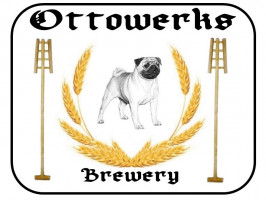Fermentation History
Target 50°F
Ambient: {{ stats.ambient | number:0 }} °F
OG: {{ stats.ogGravity | number:3 }}
Attenuation: {{ stats.attenuation | number:2 }}%
Calories: {{ stats.calories | number:1 }} / 12oz
Carbs: {{ stats.carbs | number:1 }} g / 12oz
Readings: {{ readingsCount | number }}
{{ formatHeaderDate(dates.navStart) | date:'mediumDate' }} to {{ formatHeaderDate(dates.navEnd) | date:'mediumDate' }}
Last Updated: {{ stats.lastupdated.ago }} from {{ stats.lastupdated.source }}
Hops
|
Amount
|
Variety
|
Cost
|
Type
|
AA
|
Use
|
Time
|
IBU
|
Bill %
|
|
1.50 oz |
Hallertau Hersbrucker1.5 oz Hallertau Hersbrucker Hops |
|
Pellet |
4 |
Boil
|
60 min |
25.25 |
75% |
|
0.50 oz |
Hallertau Hersbrucker0.5 oz Hallertau Hersbrucker Hops |
|
Pellet |
4 |
Boil
|
5 min |
1.68 |
25% |
|
2 oz
/ $ 0.00
|
Mash Guidelines
|
Amount
|
Description
|
Type
|
Start Temp
|
Target Temp
|
Time
|
|
4.2 gal |
|
Strike |
162 °F |
152 °F |
85 min |
Starting Mash Thickness:
1.5 qt/lb
Starting Grain Temp:
80 °F |
Priming
|
Method: co2
CO2 Level: 2.37 Volumes |
Target Water Profile
Munich (decarbonated)
Notes
Step by Step
This recipe uses reverse osmosis (RO) water. Adjust all brewing water to a pH of 5.5 using phosphoric acid. Finally, add 1 tsp. calcium chloride to the mash.
Step mash the rauchmalz, Munich, dark Munich, and aromatic malts at 131 °F (55 °C) for 10 minutes. Raise mash temperature to 146 °F (63 °C) and hold for 40 minutes, then up to 158 °F (70 °C) for 20 minutes. Start recirculating wort. Add remaining malts and raise the temperature to 168 °F (76 °C) and hold for 15 minutes. Sparge slowly and collect 6.5 gallons (24.5 L) of wort.
*My plan on the mash,
1) dough in around 136F, without circulation and hold for 10 minutes at 131F,
2) start circulating water from HLT that is as 146F, and hold for 40 minutes,
3) than raise that to 158F for 20 minutes.
4) Add rest of grains and raise temp to 168F for 15 minutes)
Boil the wort for 90 minutes, adding hops at the times indicated in the recipe.
Chill the wort to 50 °F (10 °C), pitch the yeast, and ferment until complete. Transfer to secondary and lager for six weeks at 32 °F (0 °C). Rack the beer, prime and bottle condition, or keg and force carbonate to 2.4 volumes.
Need to do a d-rest
The process is simply to raise the fermentation temperature from lager temperatures (50-55F) to 65-68F for a two day period near the close of the fermentation. Usually the diacetyl rest is begun when the beer is 2 to 5 specific gravity points away from the target terminal gravity.

Last Updated and Sharing

- Public: Yup, Shared
- Last Updated: 2019-11-21 16:34 UTC
For quick copying and pasting to a text based forum or email.
Click the Download as HTML file button below.
Recipe costs can be adjusted by changing the batch size. They won't be saved but will give you an idea of costs if your final yield was different.
|
Cost $ |
Cost % |
| Fermentables |
$ |
|
Steeping Grains
(Extract Only) |
$ |
|
| Hops |
$ |
|
| Yeast |
$ |
|
| Other |
$ |
|
| Cost Per Barrel |
$ 0.00 |
|
| Cost Per Pint |
$ 0.00 |
|
| Total Cost |
$ 0.00 |
|
Discussion about this recipe:





